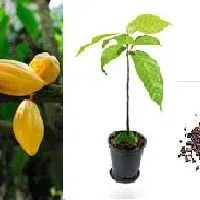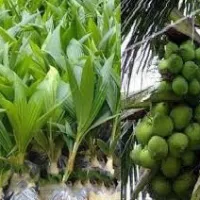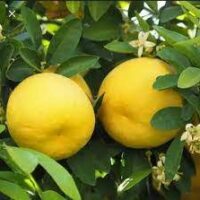Rice Bran: Economic Importance, Uses and By-Products
Rice bran is the outer layer of the rice grain, which is removed during the milling process to produce white rice. It is a valuable byproduct of rice processing that has gained attention for its various nutritional and industrial uses.
Rice bran is typically a brownish outer layer that encases the rice kernel. It consists of several layers, including the pericarp (outermost layer), aleurone layer (protein-rich layer), and germ (embryo). The bran is rich in nutrients and contains a variety of bioactive compounds, including lipids, proteins, dietary fiber, vitamins, minerals, and antioxidants.
Rice bran is a nutritionally dense ingredient with a balanced composition of macronutrients and micronutrients. Rice bran contains both soluble and insoluble fibers, which contribute to digestive health, satiety, and may help regulate blood sugar levels. The bran is rich in antioxidants, such as tocopherols, tocotrienols, and gamma-oryzanol, which help protect cells from oxidative stress and may have potential health benefits. Rice bran is a source of B-vitamins, including thiamine (B1), riboflavin (B2), niacin (B3), and vitamin B6.
It’s important to note that the nutritional and health benefits of rice bran can vary based on factors such as processing methods, storage, and individual dietary needs. Always consult with a healthcare professional or nutritionist before making significant dietary changes or incorporating new ingredients into your diet.
The Economic Importance and Uses of Rice Bran

Rice Bran is the outer layer of the rice grain that is removed during the milling process. It contains various components that have economic importance and diverse uses in various industries.
Here are some of them:
1. Edible Oil Production: Rice bran is a valuable source of edible oil, known as rice bran oil. It is extracted from the bran using solvent extraction or cold-press methods. Rice bran oil is high in unsaturated fats, particularly monounsaturated and polyunsaturated fats. It has a high smoke point and is considered healthy for cooking purposes.
2. Livestock and Poultry Feed: Rice bran is rich in nutrients like protein, fiber, and vitamins. It is often used as a supplement in livestock and poultry diets to enhance the nutritional value of the feed. It can improve the growth, health, and productivity of animals.
3. Cosmetic Ingredients: Rice bran oil is used in the production of cosmetics, skincare products, and hair care products due to its moisturizing and antioxidant properties. It is often added to creams, lotions, and soaps.
3. Pharmaceutical Formulations: Rice bran contains various bioactive compounds, such as antioxidants and phytosterols, which have potential health benefits. These compounds are being studied for their role in preventing chronic diseases and promoting human health.
3. Industrial Uses: Rice bran can be used in industrial applications like manufacturing biofuels, lubricants, and industrial chemicals due to its high fatty acid content.
4. Functional Food Ingredients: Rice bran and its extracts are used in the production of functional foods and nutraceuticals, which are products that provide health benefits beyond basic nutrition. They can be formulated into various food products to enhance their nutritional value.
5. Waste Utilization: Rice bran can be utilized for the removal of heavy metals and pollutants from wastewater, contributing to environmental protection and waste management.
6. Dietary Fiber: Rice bran is a good source of dietary fiber, which has potential health benefits for digestion and gastrointestinal health. It can be used as a dietary supplement or as an ingredient in fiber-rich foods.
Read Also: Rice Internodes: Economic Importance, Uses and By-Products
7. Bakery Products: Rice bran can be incorporated into baked goods, such as bread, muffins, and pastries, to enhance their nutritional value and add texture.
8. Dairy Products: Rice bran can be used as an ingredient in dairy products like yogurt, cheese, and ice cream to increase their nutritional content.
9. Beverages: Rice bran extracts can be used in the production of functional beverages, such as energy drinks or health drinks, to provide additional nutrients and potential health benefits.
10. Enzyme Production: Rice bran can be a source of enzymes used in various biotechnological processes, such as the production of biofuels and bioplastics.
11. Fish Feed: Rice bran can be used as an ingredient in fish feed, especially for omnivorous fish species. It provides essential nutrients and energy for fish growth.
12. Soil Amendment: Rice bran can be used as an organic soil amendment to improve soil structure, fertility, and water retention.
The Products and By-products That Can Be Derived From Rice Bran

Rice bran, also known as rice bran oil or rice bran wax, is a by-product of the rice milling process that contains various valuable components.
Here are some of the products and by-products that can be derived from rice bran, along with explanations, examples, and processes:
1. Rice Bran Oil (RBO): Rice bran oil is the primary product derived from rice bran. It is a highly versatile edible oil known for its health benefits and culinary applications. It contains a balanced composition of fatty acids, antioxidants, and nutrients. The oil is extracted from rice bran using various methods such as solvent extraction or cold pressing.
2. Rice Bran Wax: Rice bran wax is a natural wax obtained from rice bran oil. It has applications in various industries, including food, cosmetics, and pharmaceuticals. It is obtained by dewaxing rice bran oil through processes like chilling, crystallization, and filtration. Rice bran wax is used in cosmetics as a natural emollient and as a coating for fruits and vegetables to extend shelf life.
3. Rice Bran Protein Concentrate: Rice bran protein concentrate is a by-product of rice bran processing and is rich in protein content. It can be used in food and feed applications. After oil extraction, the remaining rice bran is processed to extract protein using methods like enzymatic hydrolysis or solvent extraction. Rice bran protein concentrate can be added to food products like baked goods and beverages to increase their protein content.
4. Rice Bran Fiber: Rice bran fiber is a dietary fiber extracted from rice bran. It has potential health benefits and applications in functional foods. Rice bran is processed to remove oil and protein, leaving behind the fiber-rich portion.
5. Rice Bran Feed: Rice bran can be used as a feed ingredient for livestock and poultry due to its nutritional value, including protein and energy content. The bran is typically stabilized through heat treatment to improve its shelf life and nutritional quality. Rice bran is commonly used in animal feed formulations to provide energy and nutrients to livestock and poultry.
6. Rice Bran-Based Cosmetics and Personal Care Products: Rice bran extracts are used in cosmetic formulations due to their potential skin benefits, including antioxidants and moisturizing properties. Rice bran extracts are incorporated into various cosmetic products like lotions, creams, and masks. Rice bran-based cosmetic products can include moisturizers, serums, and exfoliants.
7. Rice Bran-Based Nutraceuticals: Rice bran contains bioactive compounds that have potential health benefits. Nutraceutical products can be formulated using rice bran extracts. Rice bran extracts are processed and encapsulated to create nutraceutical supplements.
8. Rice Bran Wax Candles: Rice bran wax can be used as an eco-friendly and natural alternative to traditional paraffin wax in candle production. Rice bran wax is melted and poured into molds to create candles.
Read Also: Composition of Soils and Soil Materials
9. Rice Bran-Based Biochemicals: Rice bran contains various bioactive compounds, such as ferulic acid and phytosterols, which can be used as raw materials for the production of biochemicals, including antioxidants and biofuels. Biochemicals are extracted and processed from rice bran through various chemical and enzymatic methods.
10. Rice Bran-Based Biodegradable Packaging Materials: Rice bran can be processed to create biodegradable and environmentally friendly packaging materials, reducing plastic waste. Rice bran is treated to form a biopolymer that can be shaped into packaging products.
11. Rice Bran-Based Enzymes and Enzyme Preparations: Rice bran can be a source of enzymes that have applications in various industries, including food processing and textiles. Enzymes are extracted from rice bran and processed for specific applications.
12. Rice Bran-Based Dietary Supplements: Rice bran extracts can be formulated into dietary supplements with specific health benefits. Rice bran extracts are processed and encapsulated for ease of consumption. For instance, rice bran-based dietary supplements may target specific health concerns like cholesterol management or digestive health.
13. Rice Bran-Based Biofertilizers: Rice bran can be used as a component in the production of biofertilizers that enhance soil fertility and plant growth. Rice bran is fermented or processed to create biofertilizer products. Rice bran-based biofertilizers can be applied to agricultural fields to improve soil structure and nutrient availability.
14. Rice Bran-Based Fermented Foods: Rice bran can be used as a substrate for the fermentation of various foods, contributing to flavor and nutritional enhancement. Rice bran is mixed with microorganisms to initiate fermentation.
In conclusion, these examples illustrate the diverse range of products and applications that can be derived from rice bran, highlighting its potential as a valuable resource for various industries, from food and cosmetics to agriculture and biochemistry. As technology and research continue to advance, more innovative uses of rice bran and its components may emerge.
Read Also : Importance and Benefits of Smart Farming












